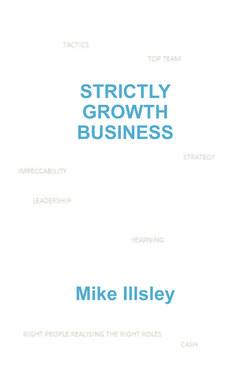Читать книгу STRICTLY GROWTH BUSINESS - Mike Illsley - Страница 12
На сайте Литреса книга снята с продажи.
REVIEWING THE STRATEGY AND THE PRODUCT LIFE CYCLE
ОглавлениеThe Product Life Cycle identifies four stages in the life of any successful product.
Early users or experimenters are the consumers prepared to take the risk of trying the product soon after it is launched. The growth stage occurs after demand takes off with many users and repeat purchase. The maturity stage kicks in when demand depends solely on repeat purchase and finally decline as the product loses its appeal as other new products starting up.
Typically products which began as test tube babies are launched and might become a problem child if not successful, or transform into rising stars before being cash cows. In practice they can move into almost any category at any time.
If products are unsuccessful they might simply die soon after launch or become low volume lines dependent upon repeat purchase by the early users or a succession of experimenters, who never repeat purchase.
The vital issues to get right are the change points in the Product Life Cycle when there are paradigm shifts in the pattern of demand. The business needs to react fast to these and take appropriate action ahead of competition.
The Chairman and CEO need to continuously assess the position of the business and its products in the product life cycle.They must be seeking to test the bases upon which the CDSV depends and identify significant changes in product market dynamics.
There are five critical points on this curve when paradigm shifts in demand occur that require immediate review; invention, launch, take off, onset of maturity and irredeemable decline.
The invention of the product will require investment in time and resources. The business needs to be satisfied that there is a latent market need for this idea. The amount of cash allocated will relate to the size of the potential opportunity or threat.
The launch of the product is designed to tempt experimenters to try it out. Launching automatically assumes the business is ready to commit itself to the strategic investment that will be needed to drive growth once the product is proven to be a success. Launching reveals the product to the competition with the threat of early copying or, even worse, improving.
As soon as the market takes off strategic investment is invariably needed to provide the capacity to fuel market growth. Strategic investments are based on market activity rather than financial justification. The business will have to make the financial and human resources available, possibly ahead of cash flow. This will be the time to appoint the very best executives suited to the risks inherent in running a business or product for fast growth.
The onset of maturity will trigger a new set of tactics designed to maximise the cash generation and extend the useful life of the product for as long as possible. This may well entail the development or launch of a second generation product. This may also initiate a change in the top team to less growth oriented and more profit oriented executives to reflect the move from being a “rising star” to becoming a “cash cow” with its greater expectation for cash generation.
Finally the start of irredeemable decline demands either harvesting through selling the business, acquisition of competitors to minimise margin decline, or reinvention.
These are all critical stages either in a product life or the life of the entire business. It is often difficult to know where you are on the product life cycle, but there should be adequate resource to improve the chances of success.
The CEO is likely to have a marketing officer intimately involved in the preparation of the next growth projects. He will be constantly reviewing the competitive position and in a good position to spot changes to market dynamics. The CEO with his top executives will also be close to market issues.
The Chairman should also have a market analyst or consultant, who is likely to cover a number of the individual markets in which the corporation or merchant investor operates. The Chairman and his analyst will be monitoring the corporate aspects of markets in which the corporation as a whole operates.
Between these resources it should be possible to recognise paradigm shifts in market dynamics speedily and hopefully see them coming before they become a surprising or serious threat. These two teams should work together rather than in competition. There is no need, or indeed no excuse, for secrecy or internal competition. Secrecy and competitiveness in this area will only be negative.
When the CDSV is reviewed the Chairman must control the investigative team of himself, the CEO, analysts and top executives. This is the essence of the chairman role and is the responsibility that the chairman cannot delegate. These CDSV reviews are rare and any Chairman will be able to find the time to conduct these reviews thoroughly. Ideally the chairman and the CEO reach commonly held opinions about the future strategic direction of the business. If there is a difference of opinion then the chairman simply must replace the CEO.
